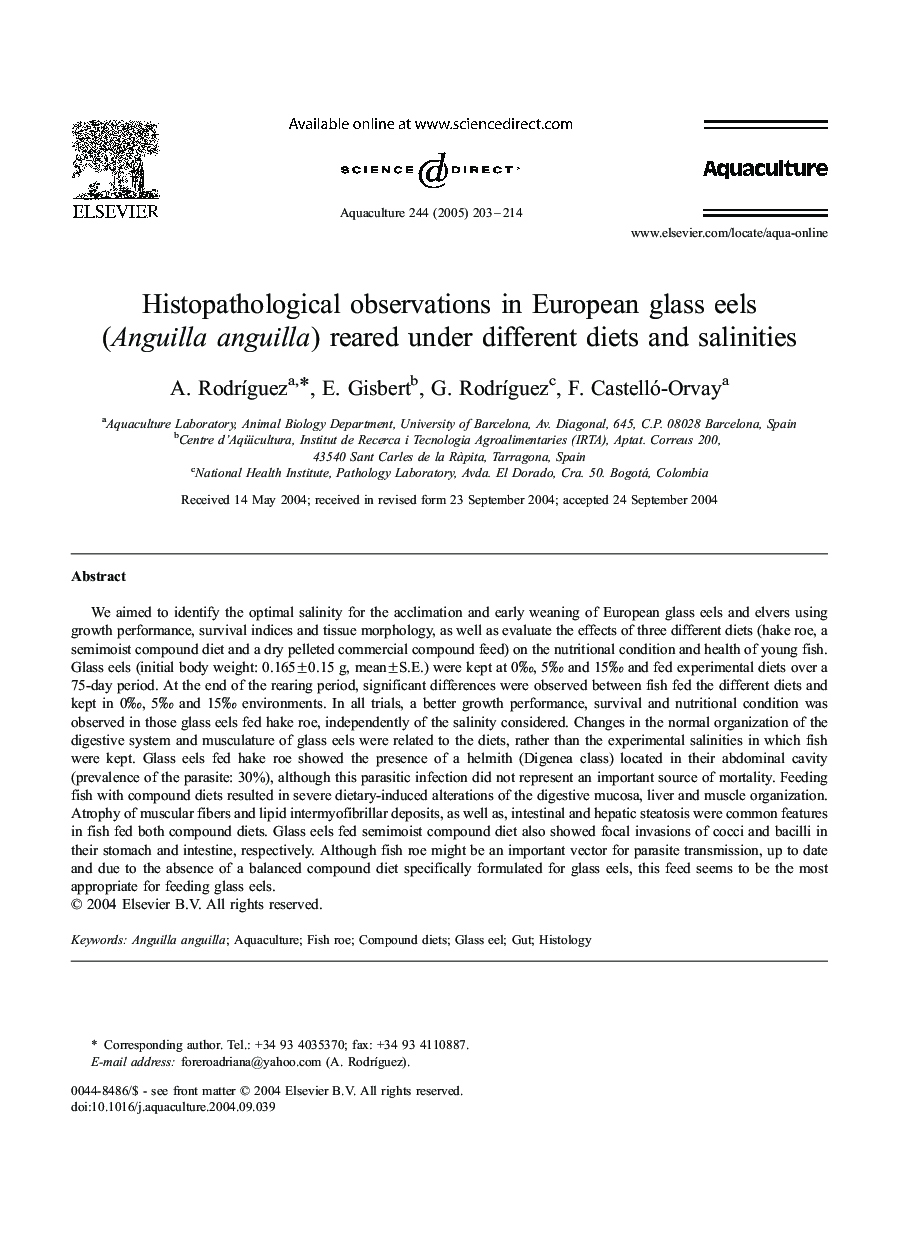| Article ID | Journal | Published Year | Pages | File Type |
|---|---|---|---|---|
| 8974912 | Aquaculture | 2005 | 12 Pages |
Abstract
We aimed to identify the optimal salinity for the acclimation and early weaning of European glass eels and elvers using growth performance, survival indices and tissue morphology, as well as evaluate the effects of three different diets (hake roe, a semimoist compound diet and a dry pelleted commercial compound feed) on the nutritional condition and health of young fish. Glass eels (initial body weight: 0.165±0.15 g, mean±S.E.) were kept at (0â°, 5â° and 15â°) and fed experimental diets over a 75-day period. At the end of the rearing period, significant differences were observed between fish fed the different diets and kept in 0â°, 5â° and 15â° environments. In all trials, a better growth performance, survival and nutritional condition was observed in those glass eels fed hake roe, independently of the salinity considered. Changes in the normal organization of the digestive system and musculature of glass eels were related to the diets, rather than the experimental salinities in which fish were kept. Glass eels fed hake roe showed the presence of a helmith (Digenea class) located in their abdominal cavity (prevalence of the parasite: 30%), although this parasitic infection did not represent an important source of mortality. Feeding fish with compound diets resulted in severe dietary-induced alterations of the digestive mucosa, liver and muscle organization. Atrophy of muscular fibers and lipid intermyofibrillar deposits, as well as, intestinal and hepatic steatosis were common features in fish fed both compound diets. Glass eels fed semimoist compound diet also showed focal invasions of cocci and bacilli in their stomach and intestine, respectively. Although fish roe might be an important vector for parasite transmission, up to date and due to the absence of a balanced compound diet specifically formulated for glass eels, this feed seems to be the most appropriate for feeding glass eels.
Related Topics
Life Sciences
Agricultural and Biological Sciences
Aquatic Science
Authors
A. RodrÃguez, E. Gisbert, G. RodrÃguez, F. Castelló-Orvay,
